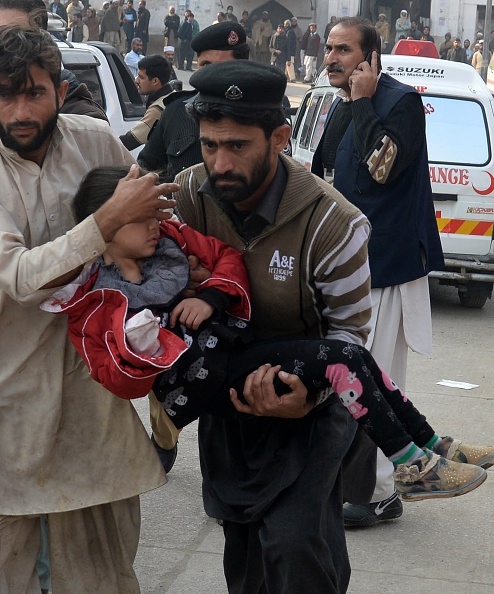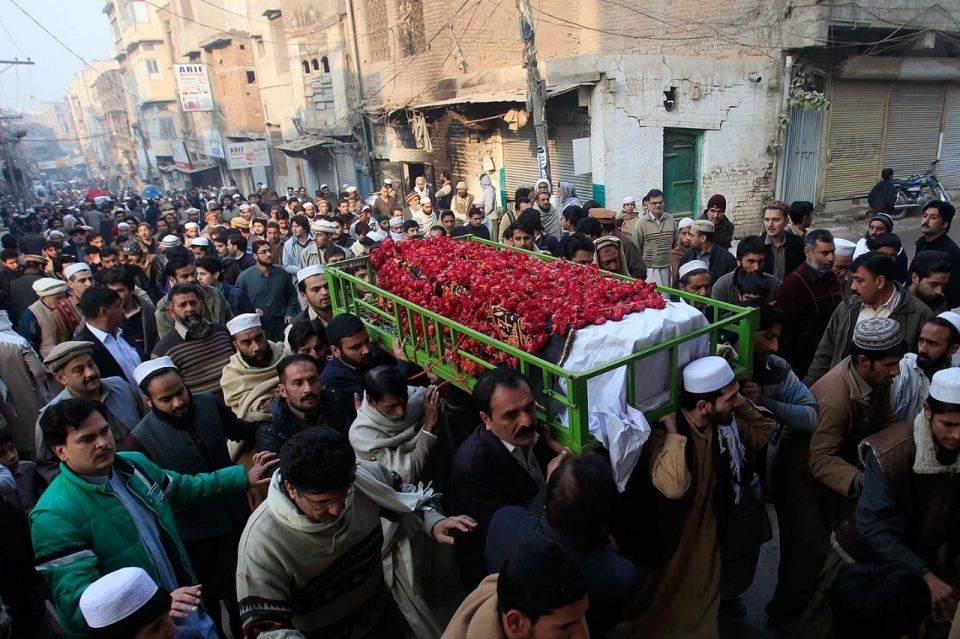
During the first week of June, Sikhs around the world commemorate a recent historical event: Operation Bluestar of 1984, a government-sanctioned military operation that resulted in countless casualties and the destruction of one of the most historically significant gurduaras, the Darbar Sahib of Amritsar (i.e., The Golden Temple).
Sikhs constitute one of the many persecuted minority communities in India, and their commitment to standing for justice has made them a regular target of oppression for centuries.
Approximately one decade prior to the massacre of 1984, Sikh leaders of Punjab drafted the Anandpur Sahib Resolution, a document that called for a social revolution within India, demanding rights for oppressed minorities such as women, lower castes and impoverished communities. The resolution also demanded increased state autonomy, guarantees of constitutional rights and equality of citizens regardless of caste, religion or gender.
In the face of government resistance, the Sikhs raised the banner of the Dharam Yudh Morcha, threatening to protest peacefully until the federal government acknowledged the Anandpur Sahib Resolution and implemented change. They made their voices heard through campaigns that blocked off streets (rasta roko), railways (rail roko), canals (nahar roko) and work (kam roko). These protests threatened the economic and social stability of the country, and this played a major role in the Government’s decision to attack the core of the Sikh community. The government employed popular media to project Sikhs as being anti-national and secessionist, and used this as a pretense for the military operation in the theo-political capital of the Sikh tradition.
On June 1, 1984, the Indian Government launched Operation Bluestar, a full-scale assault on dozens of gurduaras around the Sikh homeland of Punjab. While coordinating attacks on these centers for worship and learning, the Government focused its attention on the most venerated and historically significant of gurduaras — the Darbar Sahib.
The invasion of the Indian Army was by no means a spontaneous reaction to the threat posed by protesting Punjabis; rather, the Indian Military prepared and simulated this operation for several months prior to its execution. The army’s assault included the deployment of tear gas, army tanks and 70,000 troops. Observers have widely speculated that the timing of the attack was also carefully selected to coincide with the first few days of June, a moment during which Sikhs around the globe commemorate the martyrdom of their fifth Guru, Guru Arjan. Guru Arjan is celebrated for many reasons, including his role as the architect of Darbar Sahib, and Sikhs flock to this site in Amritsar every June to honor his contributions.
As in years past, on June 1, 1984, Sikhs were filling the complex to pay their respects when Indian military forces arrived and placed them under siege. A deliberate and calculated massacre ensued, perpetrated by a government against its own citizens. Anthropologist Joyce Pettigrew explains the purpose of the invasion: “The Army went into Darbar Sahib not to eliminate a political figure or a political movement but to suppress the culture of a people, to attack their heart, to strike a blow at their spirit and self-confidence.”
S.M. Sikri, former Chief Justice of the Supreme Court of India, elaborates by describing Operation Bluestar as a “massive, deliberate and planned onslaught to the life, property and honor of a comparatively small, but easily identifiable minority community.”
Eyewitnesses tell a story different than that of the Indian government published in the “White Paper on the Punjab Agitation.” Devinder Singh Duggal was responsible for overseeing the Sikh Reference Library and recalled that the Army fired on the complex for several hours starting around 12:30 p.m. on June 1. The next day passed relatively peacefully as the military lifted the curfew and allowed large numbers of Sikhs to enter the complex. After filtering innocent civilians into the complex, the Army again sealed the exits to Darbar Sahib, cordoned off the borders of Amritsar, and imposed a strict curfew.
At approximately 4 a.m. on June 4, the Army assault re-commenced and continued unabated for more than 48 hours. Survivors vividly recall seeing piles of dead women and children on the ground as an armored carrier and eight tanks entered the complex in the early morning of June 6. Army officers announced from inside the tanks: “Please come out. God’s blessings are with you. We will help you reach home absolutely safe and sound.” Survivors testify that those who came out in the open were shot down at sight.
Brahma Challeney of the Associated Press of America reported that a large number of innocent Sikhs were brutally murdered — some officers used the Sikhs’ turbans to tie their hands behind their backs, while other officers made rounds among the captives and executed each at point-blank range. The Indian Government has denied these statements, but eyewitness testimonies and post-mortem reports have invariably corroborated these accounts.
In order to conceal the extent of its assaults and grave human rights violations, the Indian government broadened its exile of all media outlets by barring access to organizations offering humanitarian aid. Social interest groups such as the Red Cross, Amnesty International, Human Rights Watch and the United Nations Human Rights Reporters were denied entry into Punjab, and as a result were extremely limited in their abilities to evaluate and respond to the atrocities of Operation Bluestar.
The number of civilians murdered in Operation Bluestar remains unknown. While the most conservative estimates place the number of casualties around 675, independent and reputable sources estimate a minimum of 10,000 casualties. Joyce Pettigrew reports that a senior police officer in Punjab assessed the number of casualties as closer to 20,000.
The Committee on Human Rights openly criticized the unjust attack against innocent Sikhs, particularly when there were no allegations against them:
The most disturbing thing about the entire operation was that a whole mass of men, women, and children were ordered to be killed merely on the suspicion that some terrorists were operating from the Golden Temple [i.e., Darbar Sahib] and other Gurdwaras. Thus such a major military attack resulting in the massacre of largely innocent people was undertaken on mere suspicion which had been created by the statements of police and the government themselves.
The violation of human rights in 1984 is not just a Sikh issue — it is an issue of minority rights in India. Countless minority groups have been targeted and oppressed in the 65 years since the independence of India, and the continued denial of justice perpetuates the marginalization of these groups. Until there is accountability for these human rights violations, minority communities will continue to feel isolated and aliened. And as long as this continues, Sikhs across the globe will continue to stand up against these injustices.
This essay has been adapted from the latest edition of Gunisha Kaur’s book on human rights violations in Punjab, ‘Lost in History: 1984 Reconstructed.’









